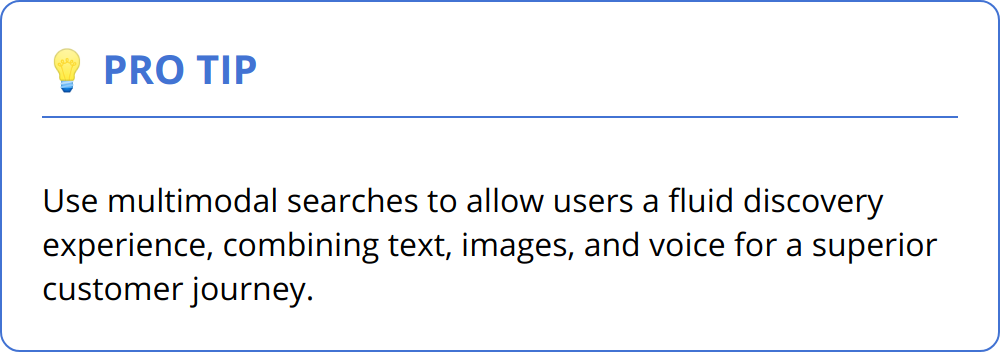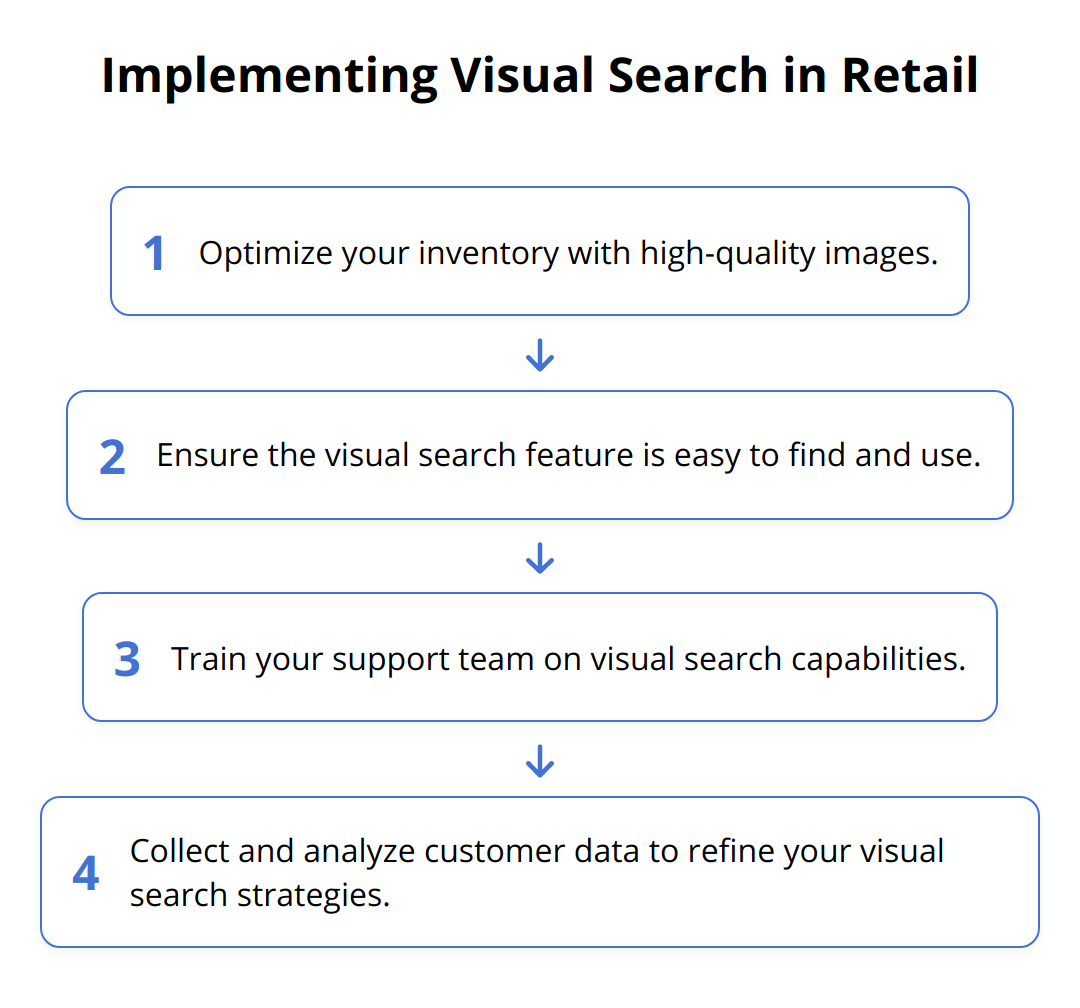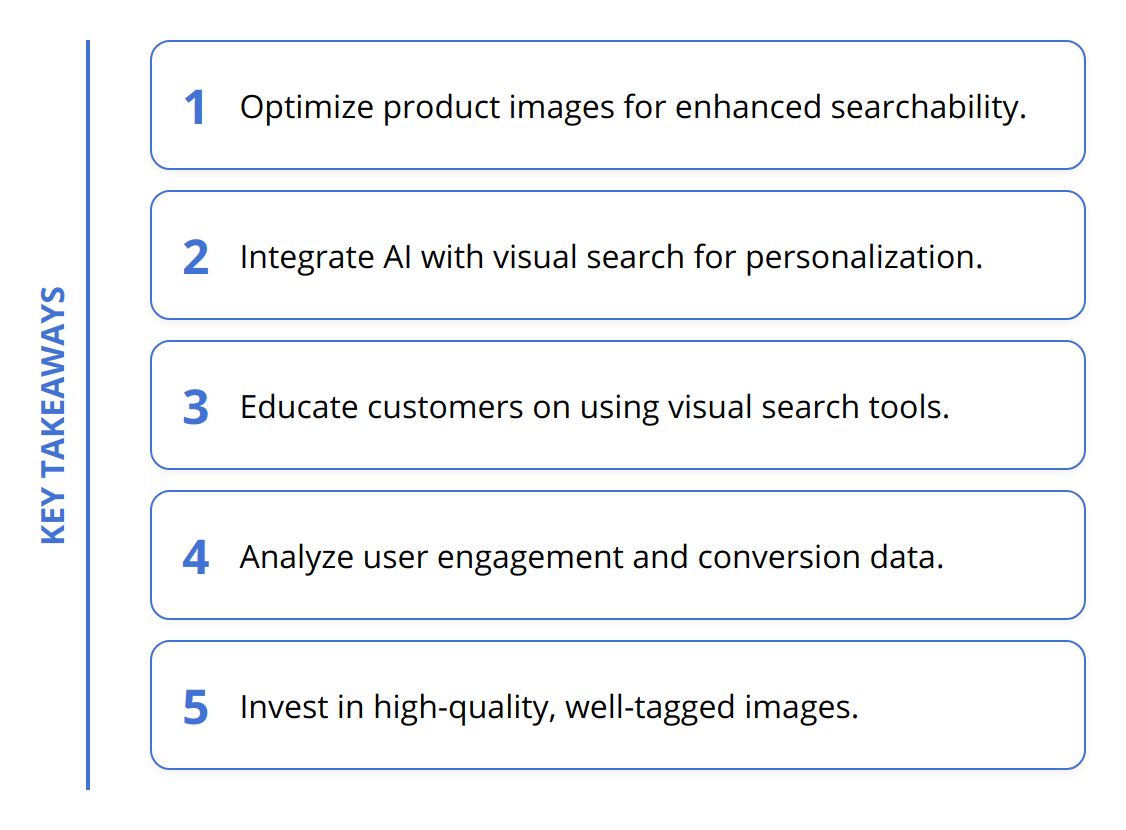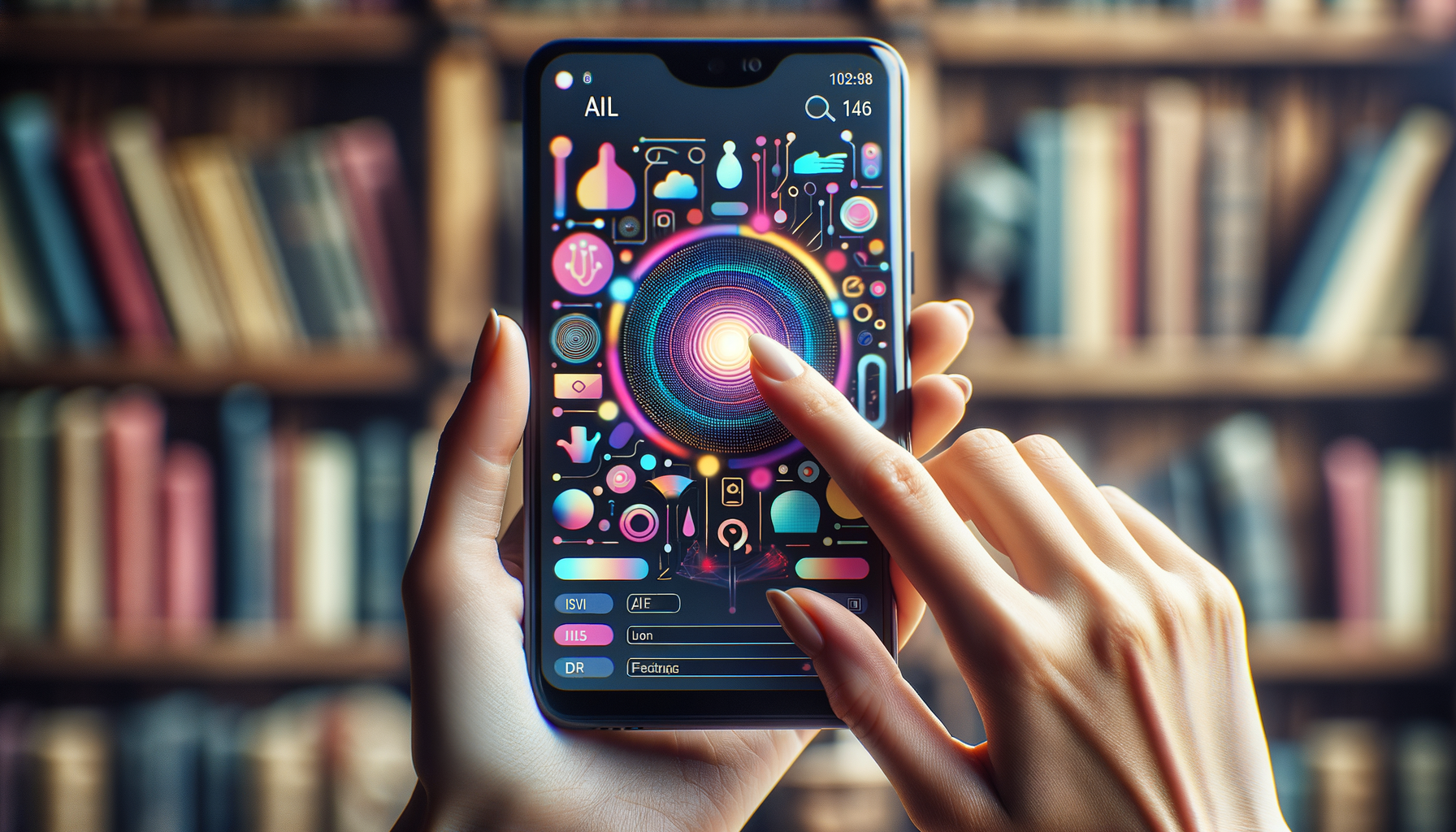Visual search technology is transforming the way we navigate the digital world, enabling a more intuitive and immediate method of locating information by simply using images. With algorithms becoming more sophisticated, industries from fashion to automotive are reaping the benefits of this innovation.
We at Emplibot are observing businesses enhance customer engagement and streamline search experiences with these advancements. As the landscape of visual search continues to evolve, understanding these trends is essential for staying ahead in an increasingly AI-driven market.
How is Visual Search Technology Advancing?
The current wave of visual search technology is nothing short of remarkable, commanding attention in the digital arena. Algorithms have grown incredibly adept, not only recognizing images but understanding context—a feat that propels user experience to stellar heights. Such progress in machine learning and artificial intelligence has meant that what was once clunky and unreliable is now swift, accurate, and a go-to solution for immediate visual discovery.
On the adoption front, the versatility of visual search means it’s no longer confined to tech giants. A wide array of industries are harnessing its power. In retail, visual search capabilities are enabling customers to snap a picture of an item and find similar products within seconds. Giants like Pinterest and Google have been climbing the visual search ladder with Pinterest reporting over 600 million visual searches every month; it’s clear proof of the technology’s exploding popularity.
Not to be overshadowed, fashion brands are crafting immersive shopping experiences, where customers can search for clothing with just a photo. Meanwhile, home decor sectors champion the trend by allowing consumers to capture design inspirations that lead to corresponding products on their platforms.
Let’s talk numbers. For instance, visual search tools in ecommerce boast conversion rates between 8-10%, while platforms with leverage like Pinterest enjoy conversion rates for image-based ads at 8.5%. This isn’t a mere uptick in interest; it’s a paradigm shift.

And here are some numbers worth noting:
-
With 62% of Millennials favoring visual search technology, it’s a no-brainer that adapting to meet their preferences is wise.
-
Retailers with visual search technology can potentially enjoy a 30% rise in digital commerce revenue.
However, just integrating visual search isn’t enough; it needs to be part of a broader strategy. The execution matters as much as the adoption. Here are tips to optimize visual search:
-
Optimize product images: Ensure they are clear, high-quality, and well-tagged to enhance searchability.
-
Invest in AI: Combining visual search with AI-driven personalization can significantly increase relevance for users.
-
Customer education: Guide customers on how to use visual search effectively.
Understanding the performance metrics behind existing tools is key to evaluating their impact. It’s not just about adoption, it’s about synergy between technology and user intent—aligning what’s possible with what’s wanted. As such, it’s critical to track user engagement, conversion rates, and the overall contribution to the customer journey.
Visual search technology is at a tipping point. The promise is there, the results are evident and the future is, unmistakably, image-driven. Companies willing to invest and innovate are the ones who will reap the significant rewards of this AI trend.
How Does Visual AI Impact User Experience?
Transforming user experience is at the heart of visual AI advancements. Today’s image recognition technologies, backed by machine learning and deep learning, have become incredibly adaptive, capable of breaking down and interpreting visual content with breathtaking speed and precision. We’ve moved beyond simple image recognition; systems now understand context, categorize items, and even suggest complimentary products or styles—an exciting development for any retailer looking to increase engagement.

Image Recognition at the Speed of Light
Rapid advancements in processing speeds mean that users can expect near-instantaneous results when searching with images. As visual search grows more refined, it’s essential for businesses to implement these technologies to keep up with consumer expectations for quick and accurate results. Retailers leveraging fast and precise image recognition can see their user engagement soar as customers enjoy frictionless search experiences leading to faster decisions.
Seamless Multimodal Searches for Enhanced Discovery
Multimodal search capabilities are shaping how consumers interact with online platforms. This means allowing users to search using a combination of text, images, and even voice to find their desired products or information. The result is a more fluid, powerful discovery tool that caters to all types of searchers, leading to satisfied customers and, in turn, a boost in conversion rates.

For businesses looking to capitalize on visual AI, here are action-focused strategies:
-
Invest in Advanced AI Tools: Picking the right technology for visual search is paramount. AI marketing tools that can handle complex visual data will set you apart.
-
Enhance Image Catalogs: Your product images shouldn’t just be good; they must be the best. High-resolution, well-tagged images will give you an edge in visual searches.
-
User-Centric Features: Incorporate visual search into the customer journey where it feels natural—quick access buttons, intuitive UI, and immediate results are key.
-
Data Analytics: Utilizing the data harvested from visual searches can inform everything from stock levels to personalized user recommendations.
-
Educate Your Audience: Sometimes your best features need a spotlight. Teach your customers how to use visual search to improve their shopping experience.
When businesses integrate these actionable items with customer-centric visual search strategies, they’re not only enhancing user experience but are also positioning their brand as an innovative leader in an AI-forward market.
Visual AI is not a futuristic dream; it’s a present-day reality with the power to dramatically change how customers engage with products and services. The companies that best understand and implement these technologies will be the ones to lead the industry.
Elevating Retail with Visual Search
Visual search is reshaping the e-commerce and retail sector by offering an unparalleled shopping experience that aligns with the fast-paced, visually-led world we inhabit. For retail, it’s an undeniable game-changer: immersive, efficient, and ripe for increasing conversions.
By streamlining the path to purchase, visual search reduces the friction typically associated with online shopping. Customers can now simply snap a photo and be presented with identical or similar items within a retailer’s inventory. This not only satisfies the visual appetites of consumers but also serves as a catalyst for spontaneous purchases, driven by visual cues and immediate product matches.
Retailers, listen up: the incorporation of visual search is a smart move, but it’s important to approach it methodically to maximize the impact. Start with a seamless integration into your current online experience. Don’t let visual search be an isolated feature; instead, make it a cornerstone of the customer journey. Product discovery should be as straightforward as capturing an image, whether from the web or a user’s own photos, and being directed to the matching items with minimal effort.

Now, let’s discuss implementation, because getting visual search right is both an art and a science. Consider the ensuing pointers as your blueprint for success:
-
Optimize for visual search: High-quality images are your inventory’s new best friend. They need to be clear, detailed, and accurately depict your products to mesh well with visual search algorithms.
-
Focus on the user interface: The visual search icon should be prominent and intuitive. You’re inviting users to a new way of shopping—make it impossible to ignore.
-
Train your team: Your customer support should be well-versed in visual search capabilities to aid customers and encourage usage.
-
Collect data, then adapt: Use the insights provided by visual search interactions to refine your approach. What are your customers looking for? How can you accommodate their tendencies to generate sales?
Leading brands are already setting the standard. ASOS, for instance, allows users to upload photos to find similar fashion items, while IKEA lets customers visualize furniture in their space before making a purchase. These aren’t short-lived gimmicks; they’re tactical moves by brands aware of the efficiency and engagement that visual search promises.
Statistics provide a compelling narrative for visual search’s efficacy in conversion:
-
Shoppers are five times faster at finding products through visual search than by traditional methods.
-
Brands adopting visual search have witnessed a significant uplift in revenues due to increased engagement and spontaneous purchases.
As brands innovate, we expect to see visual search become even more tightly integrated with other digital offerings like chatbots and personalization engines. This is not merely a trend but a substantial shift in retail interaction.
In conclusion, visual search adoption in e-commerce and retail is not a matter of following a trend—it’s about embracing a transformative technology that meets modern consumer demands. Retailers innovative enough to recognize and harness the potential of visual search technology are poised to lead in customer satisfaction and sales growth.
Will Visual Search Expand Beyond Retail?
With the retail world rapidly adopting visual search technology, the next logical step is the technology’s infiltration into new and varied sectors. Visual search has the potential to revolutionize industries by providing intuitive and immediate access to information, which until now was ponderous and text-dependent. We’re on the cusp of witnessing visual search lay down roots far beyond the confines of retail.
Visual Search Takes on New Industries
Imagine the applications of visual search in sectors like healthcare, education, and real estate. For healthcare, patients could snap a picture of a symptom and receive instant information or be connected to the right specialist. Real estate apps could grant potential buyers the ability to take a picture of a house and instantly receive property details. Education platforms might integrate visual search to bring instant, visual explanations for complex academic concepts, transforming how students learn.
In all these instances, visual search not only speeds up the information retrieval process but also adds a layer of user-friendly interaction that text searches can’t match.
Seamless Integration with Smartphones and Social Media
Smartphones are pivotal in visual search’s rise, thanks to their built-in cameras and their central role in our daily lives. Moving forward, we can expect deeper levels of integration wherein smartphone cameras become proactive tools, offering visual search before you even ask for it. Anticipate camera apps that suggest visual search automatically when they detect products or landmarks.
Social media won’t be far behind either. Visual search is set to become a staple on platforms where images are already king. Instagram and Snapchat may soon allow users to buy products or access information by simply tapping on an image in their feed.
Preparing for Shifts in User Behavior

As for user behavior, history tells us that consumers quickly adapt to and even expect technological improvements. Therefore, it won’t be long until visual search becomes second nature, leading to a shift in how information is sought online. The ease of taking a picture versus typing a query is a strong enough value proposition to change habits.
Market trends also suggest that visual search will become a key factor in purchasing decisions. Brands might soon find that visual search data provides invaluable insights into consumer preferences, potentially informing product design and inventory management.
Businesses should prepare for these changes by:
-
Expanding their visual search capabilities across all online platforms.
-
Investing in high-quality imagery and tagging to feed visual search algorithms.
-
Considering partnerships with platforms developing visual search technologies.
-
Anticipating consumer demand for image-driven interactions by training customer service and marketing teams accordingly.
Companies that embrace and adapt to visual search stand to gain immensely from the enhanced engagement and increased data it provides. Visual search’s journey from cutting-edge novelty to everyday necessity is well underway, and it promises to be as transformative as the smartphone revolution.
The path ahead for visual search is bright. With smart marketing automation strategies, businesses have an opportunity to integrate this innovative tool into a cohesive omnichannel approach, meeting the demands of a highly visual and instant-gratification society. The numbers don’t lie; companies leveraging visual search technology assertively are well placed for high returns on investment.
Wrapping Up
Visual search technology has moved from a promising innovation to a key player in streamlining the digital experience. It’s vital for businesses to grasp the trajectory of visual search trends to stay competitive in a rapidly evolving market.

The technological leap in visual search is marked by increasing sophistication in algorithms, making searches faster and more accurate. For businesses, this translates into heightened customer satisfaction and potentially significant revenue growth. Retailers have already seen improvements in engagement levels and purchase rates when implementing visual search on their platforms.
For those considering integrating visual search into their strategies, here are some essentials:
-
Visual search thrives on quality imagery, so invest in capturing high-resolution, well-tagged product photos.
-
Consider how visual search can fit seamlessly into your user journey, enhancing the shopping experience rather than complicating it.
-
Stay informed about the progress in AI, leveraging tools and insights to keep your visual search features cutting-edge.
Businesses should take note of the benefits visual search offers:
-
Faster product discovery, meeting the needs of the visual-first consumer market.
-
Seamless integration into existing digital marketing strategies.
-
Real-time analytics and insights that inform inventory and design decisions.
Visual search isn’t limited to retail; it has the potential to penetrate various industries, becoming an integral part of everyday online interactions. As consumer behavior continues to favor image-driven content, businesses across sectors will likely adopt this technology to provide instant, visual responses to consumer inquiries.
As we look to the future, visual search’s role in shaping a more intuitive and efficient digital landscape is clear. It is no longer a question of if businesses should adopt visual search, but how quickly they can do so effectively. Companies that integrate this visually intuitive AI technology into their marketing toolset are the ones who will stand out in the crowded market.
To effectively leverage visual search and other AI-driven technologies, it’s important to embrace automation and optimization tools that streamline content strategy. Services like Emplibot assist businesses by fully automating the publication of SEO-friendly articles on WordPress sites, including keyword research and internal linking, to enhance their digital presence.
In conclusion, visual search is rapidly imprinting its mark on the AI-driven world. It’s also about staying in tune with consumer needs and technological advancements that redefine the boundaries of digital interactions. The fusion of AI with visual search heralds an age of innovation, where visual fluency and immediate information retrieval go hand in hand. Businesses that adopt and adapt to these changes will likely emerge as leaders in the visual search revolution.

